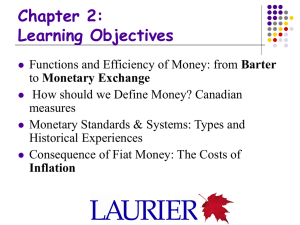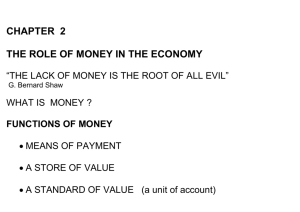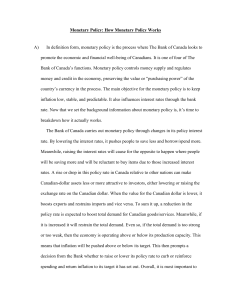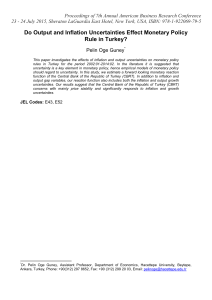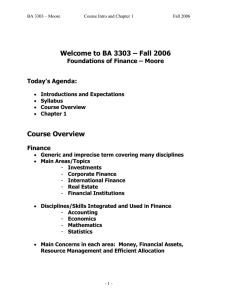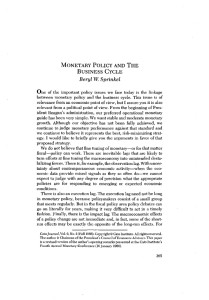Chapter 2: What You Will Learn
advertisement
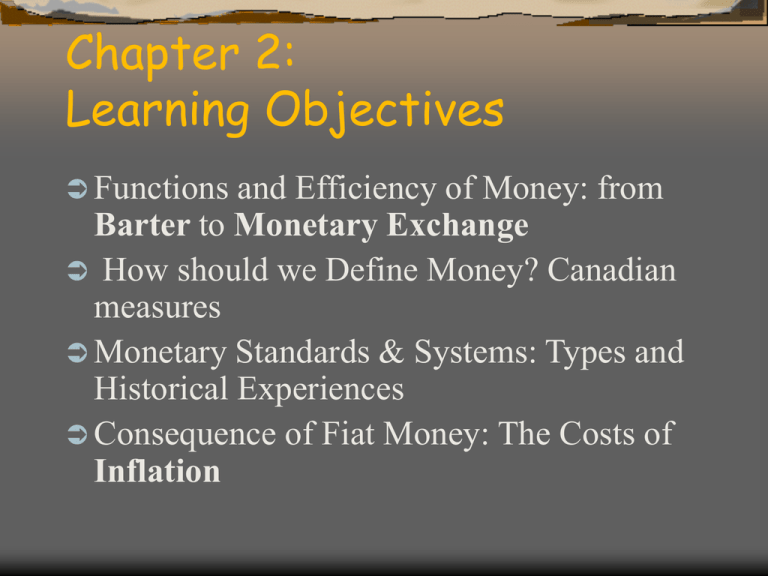
Chapter 2: Learning Objectives Functions and Efficiency of Money: from Barter to Monetary Exchange How should we Define Money? Canadian measures Monetary Standards & Systems: Types and Historical Experiences Consequence of Fiat Money: The Costs of Inflation The Functions of Money Medium of Exchange How transactions are conducted Medium of account How the value of goods & services are denominated Store of value How the value of goods & services are maintained in monetary terms Monetary Standards Commodity money Gold, Silver, and Bimetallic standards Gresham’s Law Fiat money Paper money standard Canada’s early paper money history The introduction of central banking The Measurement of Money Taking an Empirical approach Institutional aspects: chartered vs. other types of financial institutions types of deposits and their evolution: the growth of electronic transactions (Table 2.1) types of financial assets seasonal adjustment (Figure 2.2) Other refinements The details: Table 2.2 & Figure 2.1 The Canadian Money Supply: Key Measures, December 2001 M1: Cash and demand $127,510 deposits M2: M1& savings deposits $529,436 M3: M2 & term deposits $718,518 M2+: M2 & deposits @ $768,806 other deposit-taking institutions M2++: M2+ & MMMF and CSBs $1,123,062 Major Canadian Money Supply Aggregates 1200000 M2++ Millions of dollars 1000000 800000 M2+ 600000 400000 M1++ 200000 M1+ M1 0 80 82 84 86 88 90 Year 92 94 96 98 Currency in Circulation: Seasonally adjusted or unadjusted 35000 Millions of dollars 30000 25000 20000 seasonally unadjusted seasonally adjusted 15000 10000 5000 80 82 84 86 88 90 92 94 96 98 The Costs of Inflation Creditor vs. lenders: real interest rate effect Seigniorage: the profit from printing money “Shoe-leather” costs: frequent need for more cash Tax implications: paying tax on inflation “Menu” costs: cost of frequent price changes Accounting problems: historical vs current costs inflation level and volatility: positively related Inflation and Economic growth: negatively related Summary Monetary systems are more efficient than barter systems Money has 3 functions medium of exchange medium of account store of value Canadian definitions of the money supply include M1, M2, M2+, M3 Excessive monetary expansion leads to inflation which is socially costly
